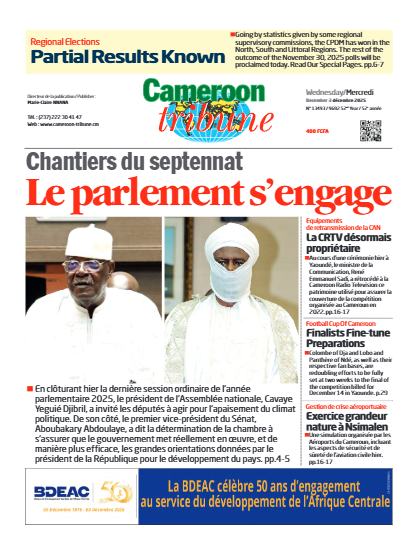Ngaoundere-Garoua Road: Strong Signals For Hope
- Par Richard Kometa
- 30 Jun 2025 13:45
- 0 Likes
News of funding for the rehabilitation of the Douala-N’Djamena highway, particularly the Ngaoundere-Garoua stretch must have been a pleasant surprise to many. Long and painful travel distances, coupled with rising cost of living imposed by the bad road, made the people weary. But that could soon be a thing of the past. A text by the Head of State signed on 20 June, 2025 authorising the Minister of the Economy, Planning and Regional Development to sign a FCAF 8,028 billion with the African Development Fund and FCFA 208,752 billion loan with the African Development Bank, had a clear message. Both loan agreements are intended to solve the long-suffering that those who ply the road have undergone in the past years.
In effect, a support programme for the transport sector, phase IV or better known by its French equivalent, (programme d’appui au Secteur des transports phase IV (PAST IV), reflects the bigger picture of a road project that carries the dreams and aspirations of thousands of people in and out of the country. Not only are inhabitants of the North and Far North regions so dependent on the road for the movement of goods and persons, there is the entire landlocked Chad which basically transports certain heavy merchandise through the Douala-N’Djamena routes. Their lack of access to the sea and the absence of a railway linking Chad to the sea leave the country with no other alternative than going through Ngaoundere-Garoua axis. The approximately 276.8 km stretch of road has been a nightmare to the population in the past years. A distance that some 10 years ago could be covered in two hours now takes a minimum six hours drive under harrowing conditions. The damages caused to vehicles and the number of human casualties recorded as a result of the poor state of the road have been disturbing. Other consequences have been the high cost of living that it imposes on the population both in the North and Far North regions as well as in Chad. Simply put, the extended time in the transportation of goods and the additional cost that such hurdles cause to businesses, often end up being imputed on consumers, thereby creating high cost of living.
So where does the good news now lie? Basically, the hope goes beyond the adage that where a road passes, development follows. Within the neighbouring localities like Mbé, Gamba, Gouna, and Ngong there are chances that the road will not only facilitate movement, but enable the people to go about their farming activities with less hitches. It goes same for other farming and business communities that benefit from the road project once it is completed. It is no news that apart from the Adamawa Region, which is an agricultural basin in the country, there is the North Region that has for decades served as an industrial hub with the cotton production company, SODECOTON, which has offered jobs to thousands of youths in the area and beyond. The economic importance of the road can therefore not be underestimated. Plans of creating an agricultural pool in some parts of the Adamawa Region can only take concrete form with the provision of a viable road infrastructure permitting the population and firms involved to produce concrete results. It equally reflects the seriousness with which the Head of State has constantly sent fact-finding missions to the localities to bring out situation reports that can justify the construction of befitting road network capable of accelerating development in the entire northern part of the country.
That is partly why the funding facilities being sought for the road includes the provision of social ameni...
Cet article complet est réservé aux abonnés
Déjà abonné ? Identifiez-vous >
Accédez en illimité à Cameroon Tribune Digital à partir de 26250 FCFA
Je M'abonne1 minute suffit pour vous abonner à Cameroon Tribune Digital !
- Votre numéro spécial cameroon-tribune en version numérique
- Des encarts
- Des appels d'offres exclusives
- D'avant-première (accès 24h avant la publication)
- Des éditions consultables sur tous supports (smartphone, tablettes, PC)











Commentaires